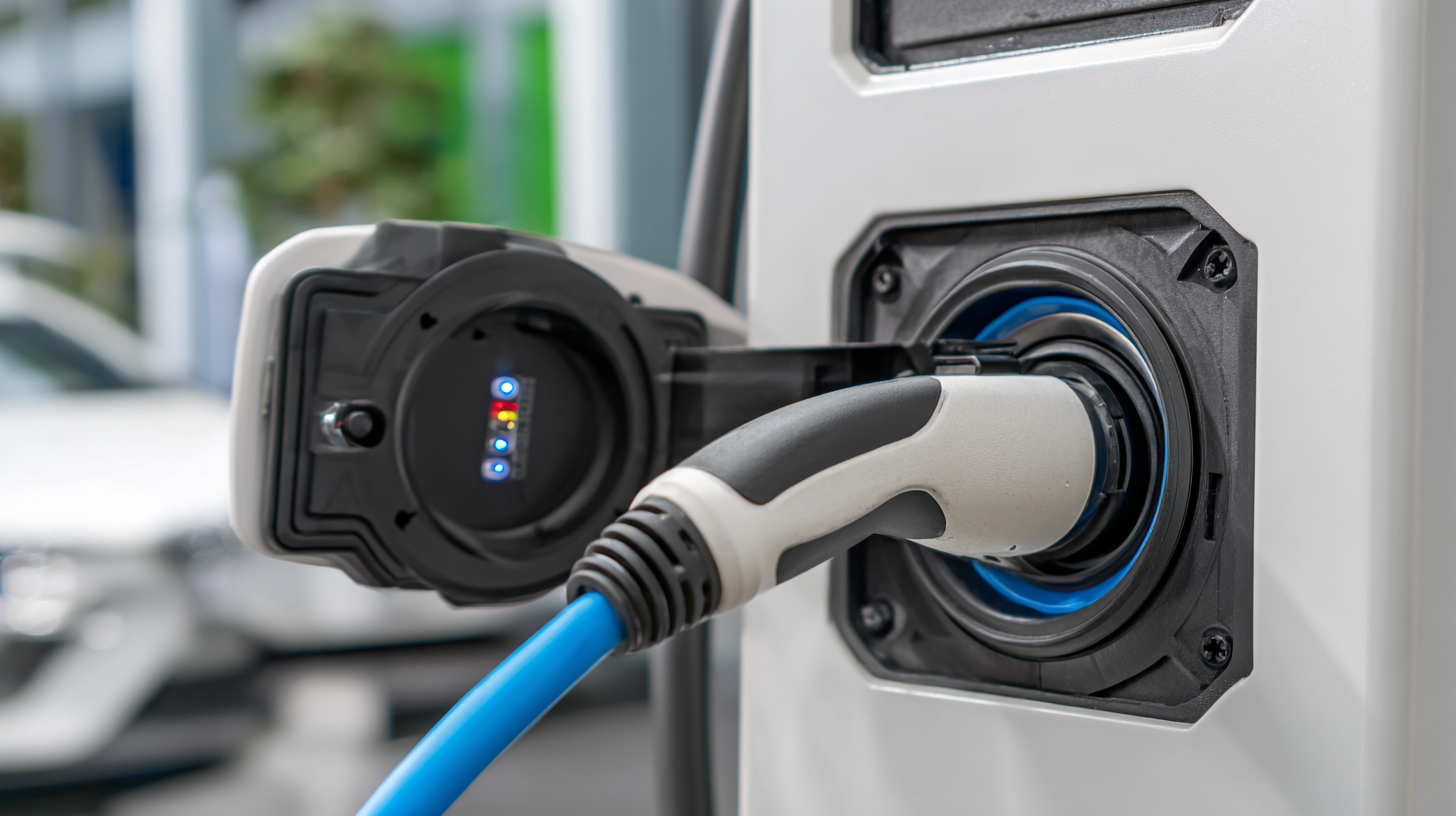Unlocking the Future: How Battery Power is Revolutionizing Renewable Energy Solutions
As the world transitions towards sustainable energy solutions, "Battery Power" plays a pivotal role in revolutionizing the renewable energy landscape. According to a report from the International Energy Agency (IEA), global battery storage capacity is projected to exceed 200 GW by 2025, an increase that reflects growing investments in energy storage technologies. This surge not only enhances the reliability of renewable sources like solar and wind but also enables grid stability and energy management during peak demand. Additionally, the U.S. Department of Energy highlights that advancements in battery technologies can reduce costs significantly, paving the way for a cleaner energy future.

As "Battery Power" continues to evolve, it becomes the cornerstone for a sustainable energy system, powering not just homes and businesses but also driving the electrification of transportation and beyond. The integration of advanced battery technologies into renewable energy infrastructures is thus unlocking new possibilities for a resilient and green energy economy.
How to Understand the Role of Battery Technology in Renewable Energy Systems
Battery technology plays a pivotal role in enhancing the efficiency and reliability of renewable energy systems. As solar and wind power generation fluctuate with weather conditions, advanced battery storage solutions allow for the capture and storage of excess energy. This stored energy can then be utilized when generation is low, ensuring a continuous power supply. Understanding the intricacies of different battery types, such as lithium-ion and flow batteries, is essential for optimizing their integration into energy systems.
Tip: Consider investing in energy management software that optimizes the use of battery storage in conjunction with renewable sources. This can significantly enhance efficiency by forecasting demand and managing energy output intelligently.
Moreover, as global emphasis shifts towards sustainable energy, innovations in battery technology are emerging, which promise higher capacities and quicker charging times. This not only makes renewable energy more feasible for larger applications but also empowers consumers to gain energy independence. When selecting battery systems, assess their lifecycle, efficiency ratings, and environmental impact to align with your sustainability goals.
Tip: Regularly monitor battery performance and adhere to maintenance schedules. This practice can prolong the lifespan of your battery systems, ensuring your renewable energy setup remains efficient and cost-effective over time.
Unlocking the Future: How Battery Power is Revolutionizing Renewable Energy Solutions
| Battery Type | Energy Density (Wh/kg) | Cycle Life (Number of Cycles) | Charge Time (Hours) | Cost per kWh ($) |
|---|---|---|---|---|
| Lithium-ion | 150-200 | 500-2000 | 1-3 | 130-200 |
| Lead Acid | 30-40 | 200-300 | 8-16 | 120-150 |
| Nickel Metal Hydride | 60-120 | 300-500 | 2-5 | 200-300 |
| Solid State | 300-500 | 2000-4000 | 1-3 | 300-600 |
| Flow Batteries | 20-60 | 5000+ | 2-6 | 250-400 |
How to Evaluate Different Types of Batteries for Energy Storage Solutions
As the demand for renewable energy continues to surge, the right battery storage solution plays a crucial role in ensuring reliability and efficiency. Evaluating different types of batteries is essential for harnessing the maximum potential of solar, wind, and other renewable sources. The leading contenders include lithium-ion, lead-acid, sodium-sulfur, and flow batteries, each offering unique advantages. Lithium-ion batteries are popular for their high energy density and long cycle life, making them ideal for both residential and commercial applications.
When selecting a battery for energy storage, consider the following tips:
- First, assess the energy capacity required for your applications—calculate your usage patterns to determine the size and type of battery that meets your needs.
- Next, evaluate the battery’s cycle life and warranty, as these factors influence long-term costs and reliability.
- Lastly, consider the environmental impact of the battery technology you choose; opting for batteries with recyclability options or lower ecological footprints can contribute positively to sustainability goals.
How to Integrate Battery Systems with Solar and Wind Energy Sources
As the world shifts towards sustainable energy solutions, integrating battery systems with solar and wind energy sources is crucial for maximizing efficiency and reliability. According to the International Energy Agency (IEA), battery storage capacity is expected to grow significantly, reaching around 1,200 GWh globally by 2040. This surge is driven by the need to balance energy supply and demand, especially as intermittent renewable sources like solar and wind become more prevalent.
To effectively integrate battery systems, it’s essential to consider the specific characteristics of each renewable source. For solar energy, batteries can store excess power generated during sunny days, ensuring a steady supply even at night. Meanwhile, wind energy systems benefit from batteries by mitigating fluctuations in wind output, providing a more stable grid. Recent studies have indicated that integrating battery storage can enhance system reliability by up to 30%, making renewable energy sources more attractive for widespread adoption.
Tips: When designing a hybrid energy system, always assess local energy consumption patterns and forecast renewable generation potential. Additionally, consider utilizing software solutions for real-time monitoring and management of energy flows to optimize the performance of integrated systems. Finally, stay informed about advancements in battery technology to ensure your systems are equipped with the latest innovations for improved efficiency.
How to Optimize Battery Management for Enhanced Efficiency and Longevity
The growing importance of battery management systems (BMS) in optimizing the performance and longevity of energy storage solutions cannot be overstated. With the BMS market expected to escalate from approximately $13.13 billion in 2025 to $22.04 billion by 2033, achieving a compound annual growth rate of 6.68%, it is clear that advancements in battery technology are pivotal for enhancing efficiency in renewable energy applications. The careful management of battery systems not only prolongs their life cycle but also ensures that they operate at peak performance, making them integral to the overall reliability of renewable energy sources.

In the automotive sector, the demand for effective battery management systems is projected to significantly increase, reflecting the rising adoption of electric vehicles (EVs). With the market size potentially reaching $4.1 billion in 2024 and growing at a remarkable 17.4% annual rate through 2034, optimizing battery management practices will be crucial. This focus on efficiency is complemented by advances in solar cell technologies, further bolstering the role of battery systems in achieving sustainable energy solutions. By integrating innovative approaches in battery monitoring and predictive modeling, stakeholders can enhance the operational lifespan and reliability of battery systems, thereby unlocking greater potential for renewable energy progress.
How to Address Environmental Impact and Sustainability in Battery Production
As the demand for renewable energy solutions continues to rise, the environmental impact of battery production has become a pressing concern. To ensure that the progress in battery technology aligns with sustainability goals, the industry must prioritize eco-friendly materials and processes. By investing in research that explores alternative materials and recycling methods, manufacturers can significantly reduce their carbon footprint while still meeting the energy demands of the future.
Tips for Companies: Consider partnerships with organizations focused on sustainable practices. Collaborating with environmental experts can provide insights into minimizing waste and enhancing recycling techniques in battery production.
 Additionally, consumer awareness plays a crucial role in pushing for greener practices. Educating the public on the importance of ethical battery sourcing and the benefits of recycled materials can drive demand for more sustainable options. When consumers prioritize sustainability, manufacturers are incentivized to innovate and adopt eco-friendly approaches.
Additionally, consumer awareness plays a crucial role in pushing for greener practices. Educating the public on the importance of ethical battery sourcing and the benefits of recycled materials can drive demand for more sustainable options. When consumers prioritize sustainability, manufacturers are incentivized to innovate and adopt eco-friendly approaches.
Tips for Consumers: Look for products that provide certifications on sustainable sourcing of materials. Supporting companies that commit to environmentally responsible battery production can help drive the market toward greener solutions.
Related Posts
-

Innovative Applications of Battery Supply in Sustainable Energy Solutions
-

Unlocking the Benefits of Battery Power for Sustainable Sourcing
-

Leading the Charge in Battery Solutions Shaping the Future of Manufacturing
-

7 Essential Tips for Choosing the Best Automotive Batteries for Your Vehicle
-

Premium Automotive Batteries Made in China for Global Market Success
-

Exploring the Best Battery Power Alternatives: Innovative Solutions for Modern Energy Needs
